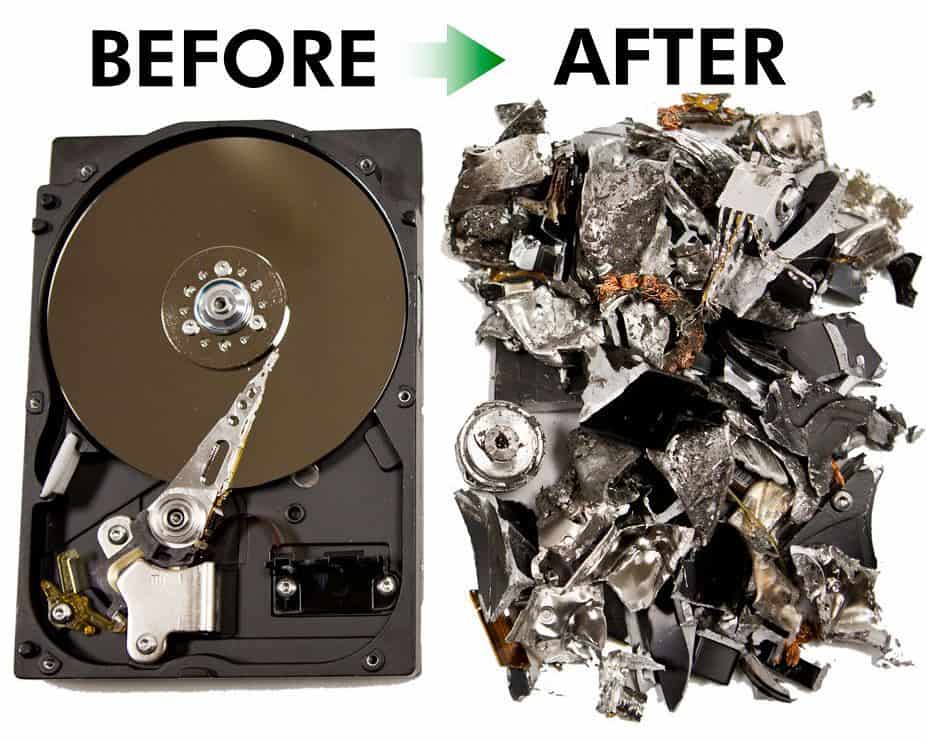Data Destruction Solutions: A Crucial Element in Your Cyber Security Strategy
Data Destruction Solutions: A Crucial Element in Your Cyber Security Strategy
Blog Article
Discovering the Relevance of Information Devastation in the Context of Computer System Safety Solutions and Protecting Confidential Data
In a period where information violations are increasingly usual, the significance of efficient information devastation can not be overstated. When no much longer necessary, Organizations must embrace strict procedures to make certain that delicate information is not only safeguarded throughout its lifecycle but likewise decisively gotten rid of. The methods used for information removal, paired with conformity to legal criteria, play a critical role in keeping discretion and count on. However, the effects of these methods expand beyond mere conformity, influencing a firm's reputation and operational stability in the electronic market. What strategies can companies carry out to enhance their information devastation procedures?
Comprehending Data Damage
Data destruction is a critical component of computer system protection that involves the irreversible elimination of data from storage space tools to stop unapproved access and prospective data breaches. In a progressively electronic landscape, companies deal with heightened risks connected with sensitive info being improperly accessed or manipulated. Efficient information damage safeguards against these dangers, ensuring that confidential dataâEUR" such as customer information, intellectual residential or commercial property, and financial recordsâEUR" can not be recouped after disposal.
Comprehending the significance of information damage prolongs past mere compliance with regulative and legal frameworks; it is crucial for preserving organizational honesty and trust. When data is poorly taken care of or inadequately destroyed, the effects can be severe, including economic loss, reputational damages, and lawful obligations.

Approaches of Information Elimination

One widespread method is information cleaning, which includes overwriting existing information with arbitrary patterns several times. This strategy makes the initial data irretrievable, making it a popular option for companies looking for to shield confidential info.
One more method is degaussing, which uses a powerful electromagnetic field to disrupt the magnetic domains on storage gadgets, effectively erasing the data. This strategy is especially efficient for magnetic media however is not applicable to solid-state drives.
Physical devastation is an additional robust method, involving the shredding or squashing of storage space tools. This method assurances that data healing is virtually difficult, making it excellent for highly sensitive details.
Finally, encryption can work as a corresponding method to information obliteration. By securing data prior to removal, organizations can add an extra layer of safety, ensuring that also if remnants are recouped, they stay hard to reach without the decryption secret. Each method needs to be chosen based upon the degree of information level of sensitivity and the details security requirements of the company.
Legal Compliance and Data Security
Organizations have to browse a complex landscape of lawful needs connected to data safety, especially after implementing techniques of data eradication. Different laws, such as the General Information Defense Law (GDPR) and the Wellness Insurance Policy Portability and Accountability Act (HIPAA), enforce strict standards on just how organizations should get rid of and manage of delicate data. Failing to follow these laws can bring about considerable legal consequences, consisting of significant penalties and reputational damages.
Information destruction procedures must be meticulously documented to demonstrate compliance with relevant laws and standards. This documentation not just acts as proof of adherence to lawful commitments however additionally highlights a dedication to securing sensitive info. Organizations must likewise develop clear plans pertaining to information retention and destruction timelines, making certain that information official site is not held longer than essential.

Furthermore, regular audits and analyses of information destruction practices are vital to keep compliance and adapt to evolving lawful structures (data destruction). By proactively addressing lawful needs, companies can reduce threats related to data violations and show their commitment to data safety and security. Inevitably, prioritizing lawful compliance in data destruction processes is not simply a regulative responsibility, yet a basic element of a robust data protection strategy
Influence On Company Track Record
The online reputation of a service can be dramatically affected by its technique to information devastation and administration. In today's electronic landscape, where data breaches can take place at any type of moment, the failing to appropriately get rid of sensitive information can bring about severe effects. Organizations that inadequately manage data damage threat revealing personal consumer info, which not just breaks privacy laws but likewise wears down depend on among stakeholders and customers.
A damaged reputation can cause decreased consumer commitment, as clients become reluctant to engage with an organization that has actually demonstrated neglect in safeguarding their data. Additionally, adverse promotion bordering an information breach can have an enduring effect, as prospective consumers could be hindered by the perceived absence of security. This can result in a direct decrease in income and market share.
Moreover, businesses that focus on data damage as part of their use this link security strategy can enhance their reputation by showcasing their commitment to securing sensitive information. By adopting strict data monitoring practices, companies can not just minimize threats yet additionally position themselves as credible entities in their particular industries, consequently strengthening their general brand name photo.

Ideal Practices for Secure Disposal
Implementing finest practices for secure disposal of information is crucial for minimizing risks related to information breaches and making certain compliance with personal privacy regulations. Organizations ought to embrace a detailed information disposal policy that details treatments for both digital and physical information devastation.
For physical information storage space gadgets, such as disk drives, shredding or degaussing is suggested to avoid information recuperation. Furthermore, companies should keep a chain of protection paperwork throughout the disposal process, guaranteeing responsibility and traceability of disposed items.
For digital data, utilizing software program that sticks to industry criteria for information wiping is essential. This software needs to overwrite existing data numerous times, making healing essentially impossible. It is also essential to validate the efficiency of the data damage process with audits or third-party assessments.
Training employees on safe and secure disposal methods adds another layer of safety and security, as human error can frequently lead to information direct exposure. Frequently updating and examining disposal policies guarantees alignment with progressing regulations and technological improvements. By implementing these finest techniques, companies can dramatically minimize the threat of unapproved information access and improve their overall data security method.
Final Thought
To conclude, information damage is an essential facet of computer system safety and security services that ensures the defense of private info from unapproved gain access to. Implementing efficient methods of data check out this site elimination, sticking to lawful compliance, and identifying the influence on service credibility are essential parts of an extensive information security strategy. By taking on finest practices for protected disposal, companies can promote count on with clients and secure sensitive data, eventually adding to a more safe electronic landscape.
In a period where information violations are progressively typical, the relevance of efficient data damage can not be overemphasized.Data destruction is a critical element of computer safety and security that includes the irreversible removal of information from storage tools to protect against unauthorized accessibility and possible data breaches. Organizations needs to also develop clear plans relating to data retention and damage timelines, guaranteeing that information is not held longer than required.
By proactively dealing with lawful needs, organizations can alleviate dangers linked with information breaches and show their dedication to information safety (data destruction). Eventually, prioritizing lawful conformity in data damage processes is not simply a regulatory obligation, yet an essential aspect of a robust data security method
Report this page